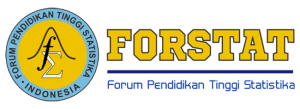Clustering for Disaster Areas Endemic Dengue Hemorrhagic Fever Based on Factors Had Caused in East Java Using Fuzzy Geographically Weighted Clustering - Particle Swarm Optimization
DOI:
https://doi.org/10.34123/jurnalasks.v8i1.10Keywords:
DHF, FGWC-PSO, East JavaAbstract
DHF is a disease that is a public health problem and is endemic in almost all districts / cities in East Java. The disease is transmitted through the bite of Aedes aegypti and Albopictus. There is currently no anti-viral drugs and vaccines to prevent dengue fever, then to break the chain of transmission, vector control is considered most appropriate at this time, but because the vector is widespread, it is necessary to control the success of the total coverage (covering the whole area) so that mosquitoes can not be multiply. This research was proposed to investigate of classify the endemic regions in East Java based factor that causes dengue vector control can be focused on certain areas that have the highest potential of dengue fever in East Java. This research was used a method FGWC-PSO to classify areas in East Java with the approach of some of the factors associated with an increase in dengue disease. The data will be used is from the publication of the East Java in Figures In 2013, East Java Provincial Health Profile in 2012, and Indonesian Disaster Data and Information in East Java in 2012. Overall, causes the highest number of dengue fever in some areas in East Java province, namely:
Downloads
References
Badan Pusat Statistik, (2013), Jawa Timur Dalam Angka Tahun 2013, Surabaya: BPS.
Balasko, B., Abonyi, J., & Feil, B. (2005). Fuzzy clustering and data analysis toolbox. Department of Process Engineering, University of Veszprem, Veszprem.
Dinas Kesehatan Provinsi Jawa Timur. (2013). Profil Kesehatan Provinsi Jawa Timur 2012. Surabaya: Dinas Kesehatan Provinsi Jawa Timur.
Kementerian Kesehatan Republik Indonesia. (2015). Kemenkes Terima Laporan Peningkatan Kasus DBD di Jawa Timur.
http://www.depkes.go.id/article/view/15013000002/kemenkes-terimalaporan-peningkatan-kasus-dbd-dijawa-timur.html<diakses tanggal 16 Februari 2015>
----------. (2015). Secara Nasiobal, DBD Belum Masuk Kategori KLB.. http://www.depkes.go.id/article/view/ 15020600001/secara-nasional-dbdbelum-masuk-kategori-klb.html. <diakses tanggal 16 februari 2015>
Koban, Antonis Wiwan. (2005). Kebijakan Pemberantasan Wabah Penyakit Menular: Kasus Kejadian Luar Biasa Demam Berdarah Dengue (KLB DBD). The Indonesian Institute.
Kurniawan, Robert, and Baiq Nurul Haqiqi. "PENGELOMPOKAN MENGGUNAKAN METODE SUBTRACTIVE FUZZY C-MEAN (SFCM), STUDI KASUS DEMAM BERDARAH DI JAWA TIMUR." Jurnal Statistika3.2 (2015).
Mason, G. A., and R. D. Jacobson. (2007). "Fuzzy geographically weighted clustering." Proceedings of the 9th international conference on geocomputation, Maynooth, Eire, Ireland. 2007.
McCullock, John.”Particle Swarm Optimization”. http://mnemstudio.org/ particleswarm-introduction.htm. (June 27, 2015, 23:49)
Putra, Fikri Handoko. (2015). Pengembangan Modul Aplikasi Clustering Menggunakan Metode Fuzzy Geographically Weighted Clustering Using Particle Swarm Optimization (FGWCPSO) Pada Forum Analisis Statistik (FAST). Komputasi Statistik. Sekolah Tinggi Ilmu Statistik. Jakarta. [Skripsi]. 2015.
Rini, Dian Palupi, Siti Mariyam Shamsuddin, and Siti Sophiyati Yuhaniz.(2011)."Particle swarm optimization: technique, system and challenges." International Journal of Computer Applications.14.1 (2011):19-26.
Rini, D. P., Shamsuddin, S. M., & Yuhaniz, S. S. (2011). Particle swarm optimization: technique, system and challenges. International Journal of Computer Applications, 14(1), 19-26.
Siregar, Faziah A. (2004), "Epidemiologi dan Pemberantasan Demam Berdarah Dengue (DBD) di Indonesiai". Fakultas Kesehatan Masyarakat. Universitas Sumatra Utara.
Sitorus, Rotua Sumihar. (2009). Perilaku Masyarakat dalam Pencegahan Penyakit Demam Berdarah Dengue di Puskesmas Medan Johor Kota Medan Tahun 2009. [Tesis]. Medan: Universitas Sumatera Utara.
Slamet HP. (2015). KLB Demam Berdarah. Antara News Jawa Timur. http://www.antarajatim.com/lihat3/ber ita/150557/klb-demam-berdarah. <diakses tanggal 18 Februari 2015> Subdirektorat KLB, Ditjen PP&PL, Kementerian Kesehatan RI, 2009, Change To The Vector Borne Diseases In Indonesia.
Wahyono, Tri Yunis Miko, Budi Haryanto, Sigit Mulyono, (2010), Faktor-faktor yang Berhubungan dengan Kejadian Demam Berdarah dan Upaya Penanggulangannya di Kecamatan Cimanggis, Depok, Jawa Barat, Buletin Jendela Epidemiologi, Vol. 2, Agustus 2010. pp. 31 – 43.
Wijayanto, Arie Wahyu, and Purwarianti, Ayu. (2014) "Improvement of fuzzy geographically weighted clustering using particle swarm optimization." Information Technology Systems and Innovation (ICITSI), 2014 International Conference on. IEEE, 2014.















